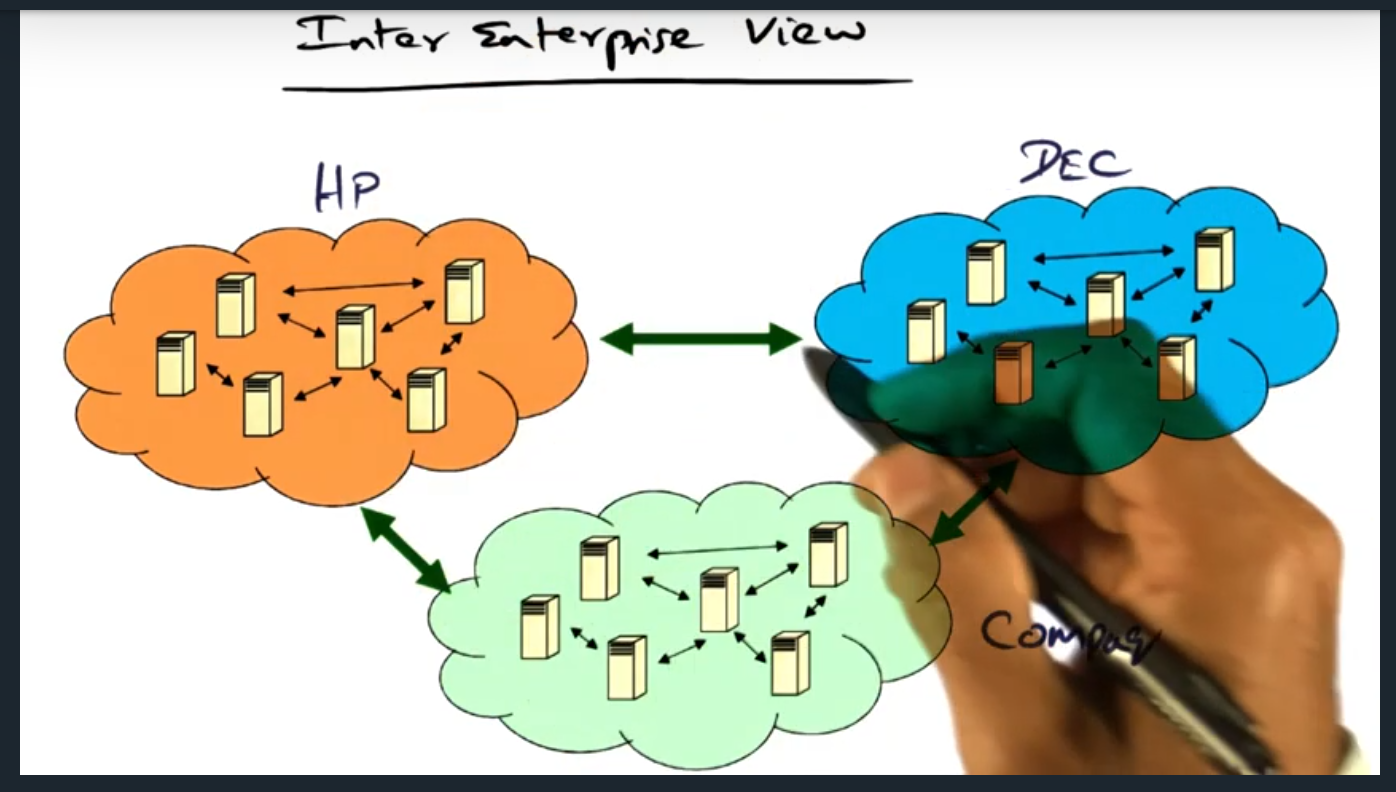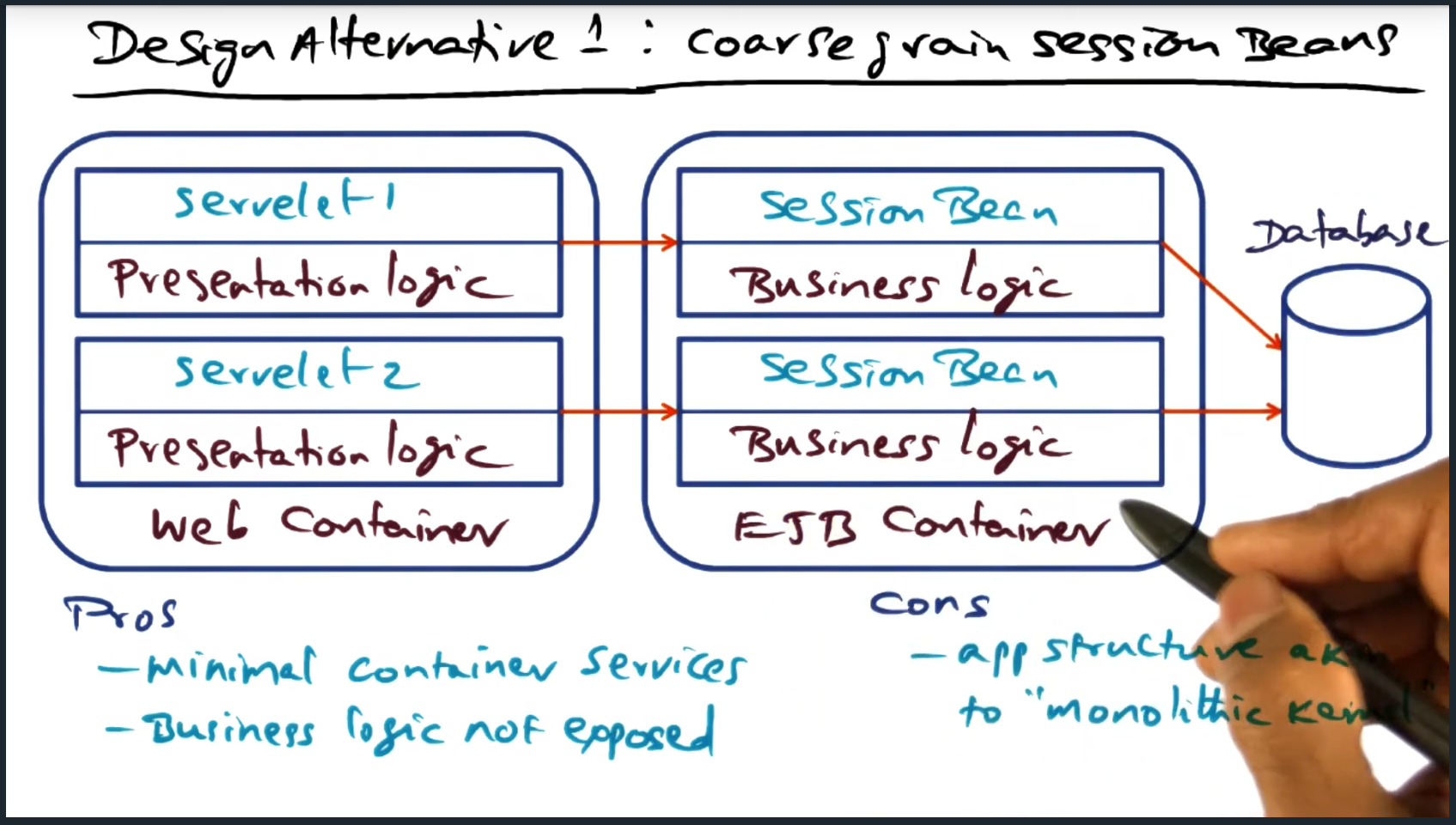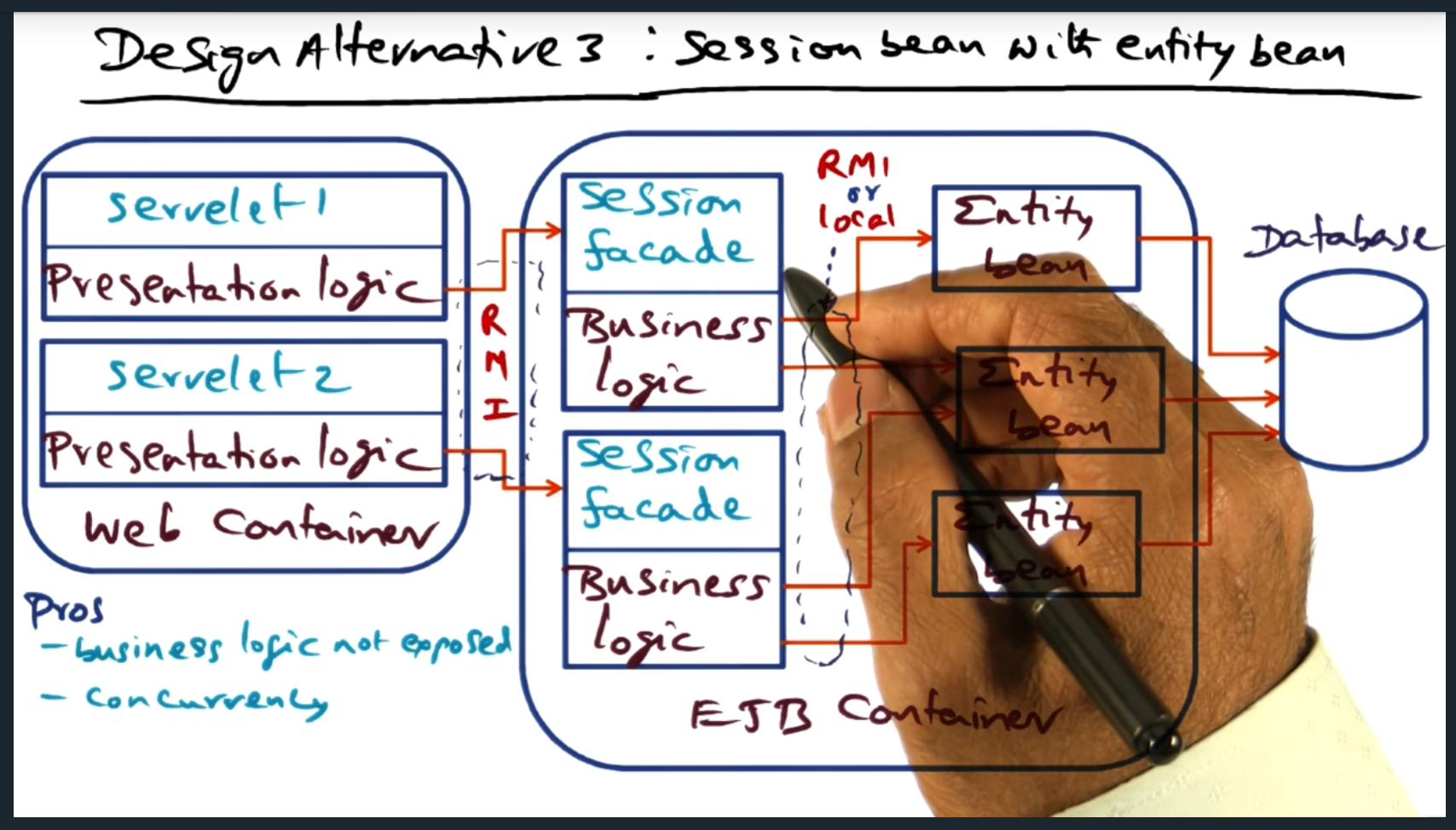Introduction
Key Words: EJB, enterprise java beans
Discuss how we can structure system software for large scale distributed sytem service
Inter Enterprise View

Key Words: monolithic, supply chain model, amalgam, survivability, complexity
From a user perspective, we view a system (like Ebay or Google) as a blackbox. But in reality, much more complex than that and within the system, there may be multiple enterprise working together and this can be difficult when trying to handle failures, complexity, and so on
An Example
Key Words: scheduling, parallel systems, synchronization, communication, atomicity, concurrency, object technology, reuse
Using a system like Expedia, we face same issues in parallel systems like synchronization and concurrency and scheduling and atomicity and so on
N-tier applications

Key Words: concurrency, parallelism, embarrassingly parallel applications
Want to reduce network communication (latency), security (for users) by not compromising business logic, and increase concurrency
Structuring N Tier Applications

Key Words: JEE, protection domain, bean
We can split the protection domain uses containers, at the client or at the presentation layer, business layer or database layer. Each container contains N beans, bundle of java objects
Design alternative (Coarsegrain session beans)

Key Words: monolithic, concurrency
Each session bean is very granular, the session bean encapsulating most of the logic. The upshot of this approach is that the container offers little service and the logic is not exposed outside the corporate network. The downside is that we do not exploit concurrency. There’s a missed opportunity where the EJB container and pull in data for multiple sessions
Design Alternative
Key Words: trade offs, persistent, bean managed persistence, container managed persistence, data access object
With data access object design, we confront the short comings of the coarse grain session bean, by exploiting concurrency for data access, limiting I/O and network latency when accessing the database. The trade off? Business logic is exposed to the web container
Design alternative (session bean with entity bean)

Key Words: session facade, design pattern, remote interface, RMI
We now embed a session facade, that provides concurrency AND does not exposed business logic. To that end, we use RMI (remote interface) to communicate between the containers and/or between the session facade and entity bean
